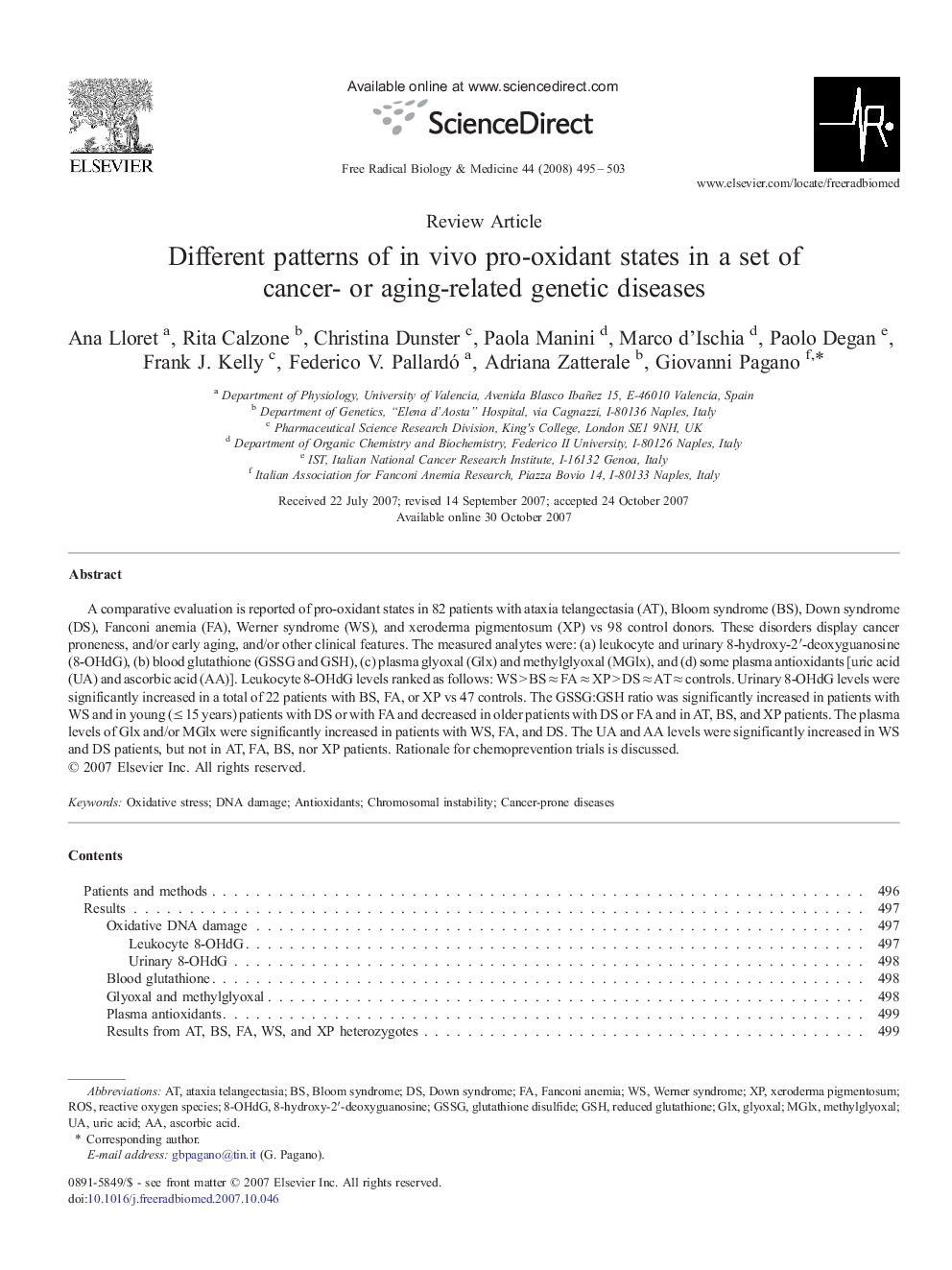| Article ID | Journal | Published Year | Pages | File Type |
|---|---|---|---|---|
| 1911021 | Free Radical Biology and Medicine | 2008 | 9 Pages |
A comparative evaluation is reported of pro-oxidant states in 82 patients with ataxia telangectasia (AT), Bloom syndrome (BS), Down syndrome (DS), Fanconi anemia (FA), Werner syndrome (WS), and xeroderma pigmentosum (XP) vs 98 control donors. These disorders display cancer proneness, and/or early aging, and/or other clinical features. The measured analytes were: (a) leukocyte and urinary 8-hydroxy-2′-deoxyguanosine (8-OHdG), (b) blood glutathione (GSSG and GSH), (c) plasma glyoxal (Glx) and methylglyoxal (MGlx), and (d) some plasma antioxidants [uric acid (UA) and ascorbic acid (AA)]. Leukocyte 8-OHdG levels ranked as follows: WS > BS ≈ FA ≈ XP > DS ≈ AT ≈ controls. Urinary 8-OHdG levels were significantly increased in a total of 22 patients with BS, FA, or XP vs 47 controls. The GSSG:GSH ratio was significantly increased in patients with WS and in young (≤ 15 years) patients with DS or with FA and decreased in older patients with DS or FA and in AT, BS, and XP patients. The plasma levels of Glx and/or MGlx were significantly increased in patients with WS, FA, and DS. The UA and AA levels were significantly increased in WS and DS patients, but not in AT, FA, BS, nor XP patients. Rationale for chemoprevention trials is discussed.
